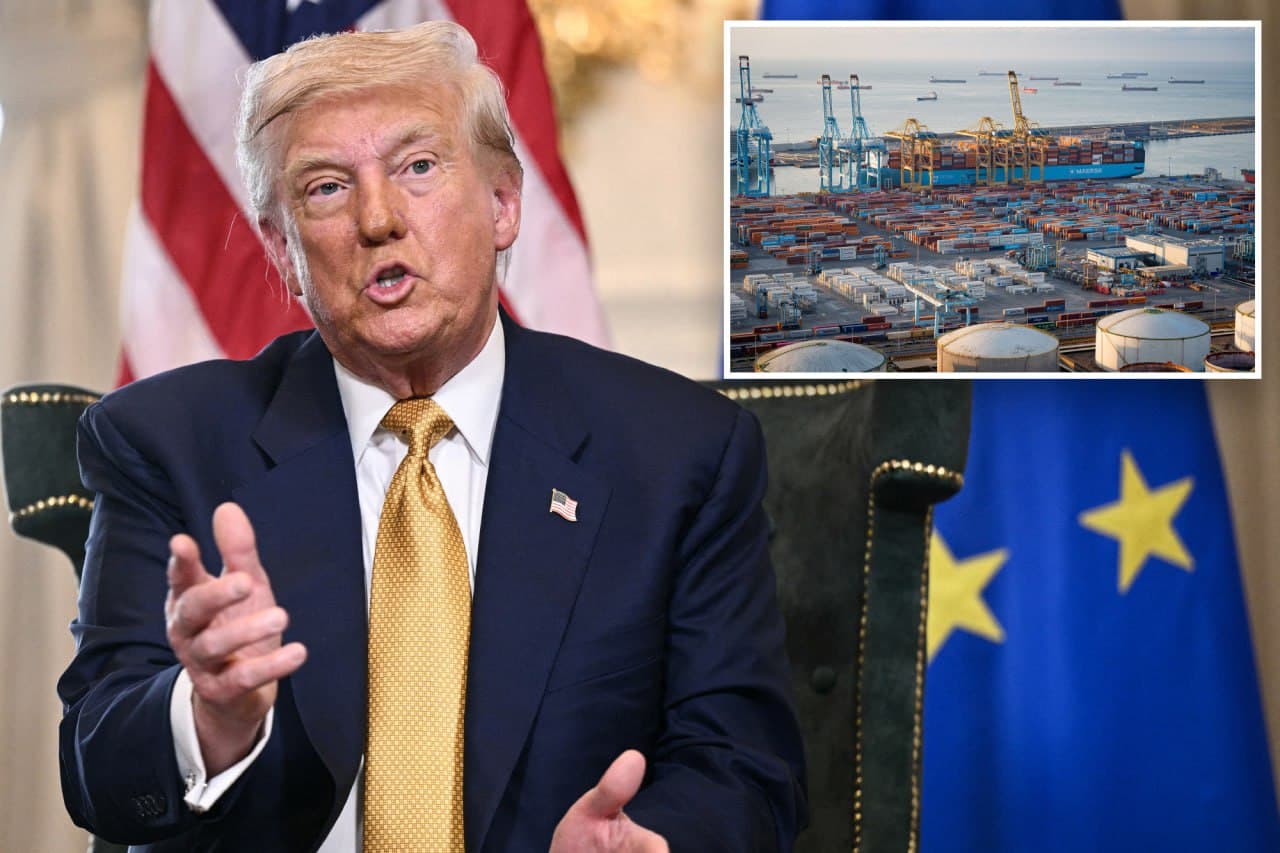Trump Threatens 35% Tariffs on EU Over $600 Billion Investment Dispute
In a bold move that could reshape transatlantic trade relations, former President Donald Trump recently stated that he would impose a staggering 35% tariff on European Union (EU) goods if the bloc fails to fulfill its pledge of investing $600 billion in the U.S. economy. This warning comes as part of Trump"s broader strategy to recalibrate America"s economic dealings with Europe, which he claims has long benefited at the expense of American workers.
Background & Context
Trump"s administration previously engaged in a series of contentious trade negotiations with the EU, characterized by tariffs and counter-tariffs. The $600 billion investment commitment was seen as a significant step toward reducing trade tensions and fostering economic cooperation. However, Trump"s recent comments suggest that he views this promise as a bargaining chip rather than a cooperative gesture. "They gave me $600 billion, and that’s a gift," Trump remarked, emphasizing his belief that the EU"s investment is an obligation rather than a voluntary contribution.
The former president"s rhetoric reflects a longstanding narrative that European nations have been "robbing" the United States economically. By threatening increased tariffs, Trump aims to pressure European leaders into complying with their investment plans, thereby positioning himself as a defender of American interests on the global stage.
Key Developments
During a recent public address, Trump laid out his stance with a mix of bravado and assertiveness. "Then they will pay tariffs of 35%. They lowered their tariffs by paying $600 billion, and because of that, I reduced their tariffs from 30 to 15 percent," he explained, illustrating the quid pro quo he perceives in the current trade arrangement. The former president"s remarks serve as both a warning and a rallying cry for his supporters, framing the issue as a fundamental battle for economic fairness.
Trump"s comments also highlight his belief in the power of tariffs as a tool for economic leverage. By threatening to increase tariffs, he aims to create a sense of urgency for European leaders to act, thereby pressuring them to adhere to their commitments. This tactic is reminiscent of his previous trade policies, which relied heavily on imposing tariffs to renegotiate trade agreements.
Broader Impact
The implications of Trump"s threats extend beyond mere economic figures. Economists and trade experts warn that such an aggressive stance could lead to a new trade war, reminiscent of the tensions seen during Trump"s presidency. Imposing a 35% tariff would not only increase costs for European exporters but could also trigger retaliatory measures from the EU, further complicating the already fraught relationship between the two economic powerhouses.
Furthermore, the potential for escalating tariffs raises concerns among businesses and consumers alike. Higher tariffs typically translate to increased prices for goods, affecting everything from consumer electronics to automotive parts. As previously reported, tariffs on imported drugs are also on Trump"s agenda, with plans suggesting a 250% increase to boost U.S. pharmaceutical production, indicating a broader strategy of protectionism across multiple sectors.
What"s Next
As the deadline for the EU to fulfill its investment promise approaches, all eyes will be on how European leaders respond to Trump"s ultimatum. A failure to meet the investment target could lead to significant economic repercussions, not only for Europe but also for American consumers and businesses reliant on European goods.
In the coming weeks, negotiations and discussions will likely intensify, with Trump leveraging his platform to rally support for his position. Analysts will be closely monitoring the situation, particularly as it intersects with other geopolitical issues and trade policies. The stakes are high, and the outcome of this dispute could have lasting effects on U.S.-EU relations and the global economic landscape.


![[Video] Vladimir Putin delivers speech in military uniform](/_next/image?url=%2Fapi%2Fimage%2Fthumbnails%2Fthumbnail-1764621642413-vh08a-thumbnail.jpg&w=3840&q=75)



